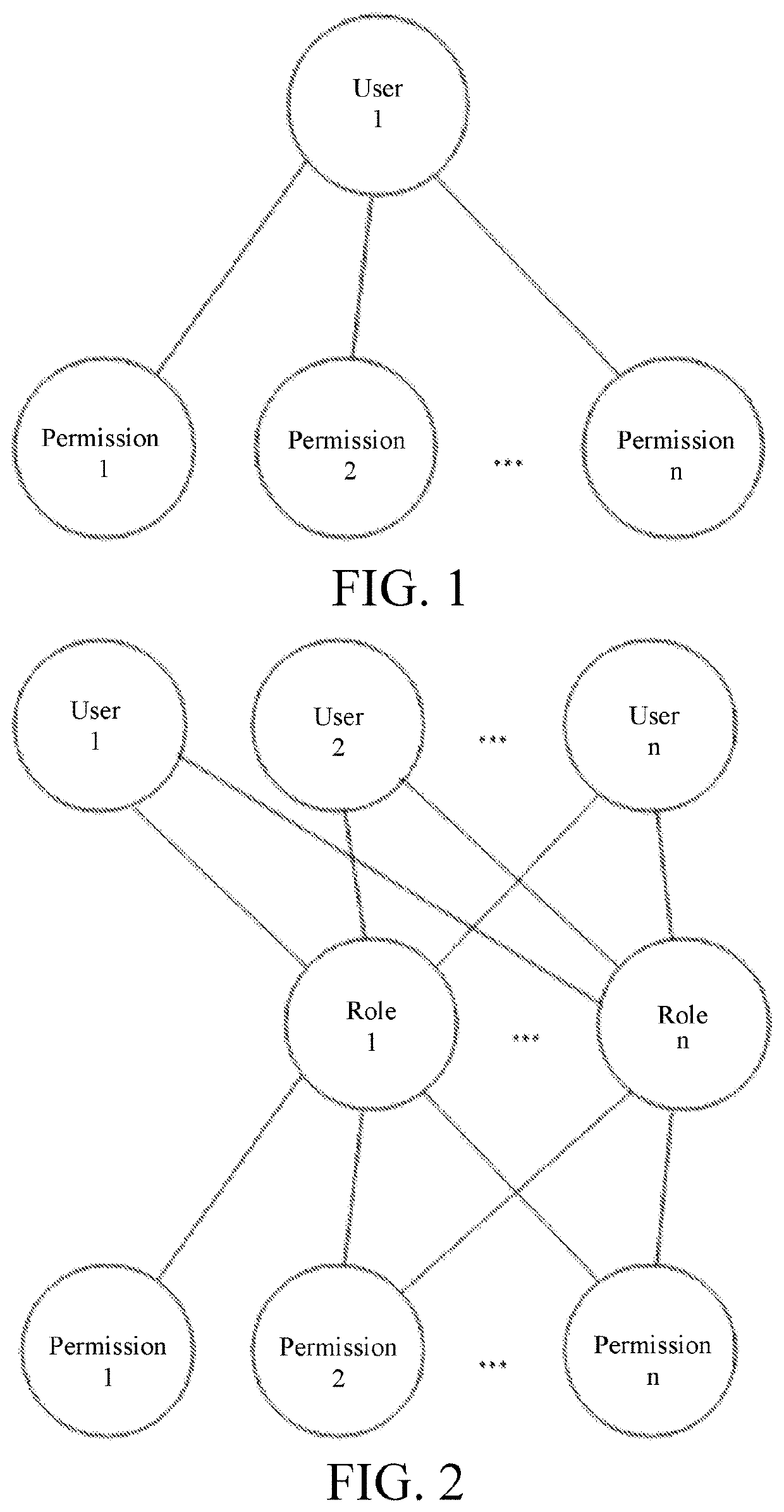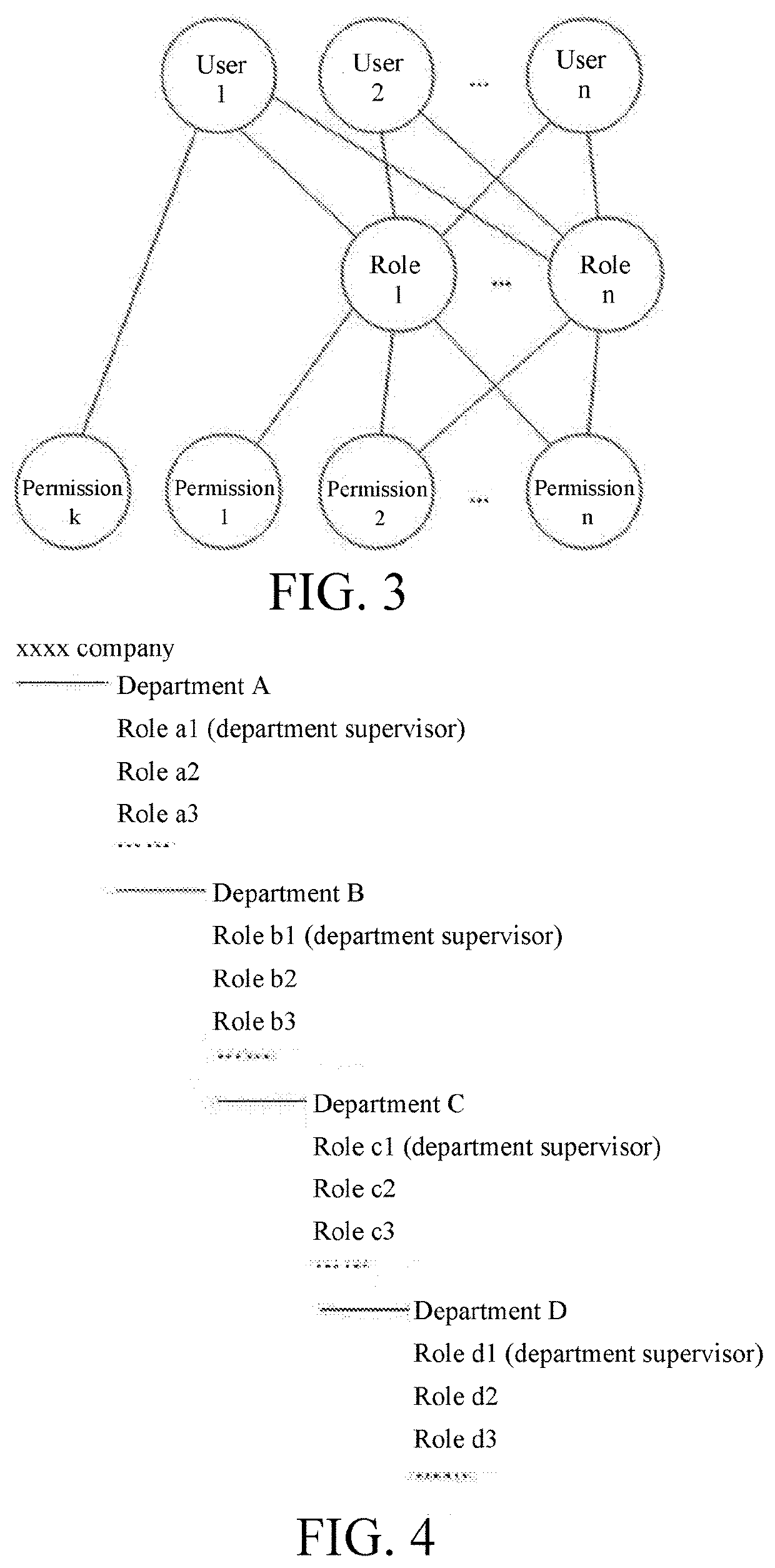Method based on form fields for arranging examination and approval roles at workflow examination and approval nodes
a workflow and form field technology, applied in the direction of digital data protection, instruments, data processing applications, etc., to achieve the effect of high universality and flexibleness and convenien
- Summary
- Abstract
- Description
- Claims
- Application Information
AI Technical Summary
Benefits of technology
Problems solved by technology
Method used
Image
Examples
embodiment 1
[0078]A method for setting approval roles at workflow approval nodes based on form fields includes a step of setting a system organization structure and a step of setting an approval role according to a department level.
[0079]The step of setting the system organization structure includes the following sub-steps:
[0080]SS1: creating departments and roles included in the system organization structure; and
[0081]SS2: setting a hierarchical relationship among the departments, where as shown in FIG. 4, a department A is one level higher than a department B, and the department A is two levels higher than a department C . . . , and setting a department supervisor role in each department.
[0082]The step of setting the approval role according to the department level includes:
[0083]SSS1: Selecting a level-based method for setting an approval role.
[0084]SSS2: Selecting one of a role attribute field, a department attribute field, or a submission role of an approval process in a form corresponding ...
embodiment 2
[0094]A method for setting approval roles at workflow approval nodes based on form fields includes a step of setting a system organization structure and a step of setting an approval role according to a department level. The step of setting the system organization structure includes the following sub-steps: SS1: creating departments and roles included in the system organization structure; and SS2: setting a hierarchical relationship among the departments, and setting a department supervisor role in each department, where as shown in FIG. 4, a department A is one level higher than a department B, and the department A is two levels higher than a department C. . . . The step of setting the approval role according to the department level includes: SSS1: selecting a level-based method for setting an approval role; SSS2: selecting one of a role attribute field, a department attribute field, or a submission role of an approval process in a form corresponding to the approval process as a le...
embodiment 3
[0107]As shown in FIG. 5, a workflow control method includes the following steps: S1: building a three-layer structure model of user-role-permission that includes: a role layer, wherein an operation subject of process approval in a workflow is a role, each role is an independent individual rather than a group or class, one role can only be related to a unique user during the same period, and one user is related to one or more roles; a permission layer composed of permissions required to be used in the execution of the workflow, wherein each permission is directly granted to a role, and a user layer, wherein a user determines an approval task in the workflow through a related role, and performs an approval operation with the permission of the related role; S2: as shown in FIG. 7, using the three-layer structure model to control the workflow, wherein one approval process includes a start node, at least one approval node, and an end node. The start node initiates or requests or submits...
PUM
 Login to View More
Login to View More Abstract
Description
Claims
Application Information
 Login to View More
Login to View More - R&D
- Intellectual Property
- Life Sciences
- Materials
- Tech Scout
- Unparalleled Data Quality
- Higher Quality Content
- 60% Fewer Hallucinations
Browse by: Latest US Patents, China's latest patents, Technical Efficacy Thesaurus, Application Domain, Technology Topic, Popular Technical Reports.
© 2025 PatSnap. All rights reserved.Legal|Privacy policy|Modern Slavery Act Transparency Statement|Sitemap|About US| Contact US: help@patsnap.com



